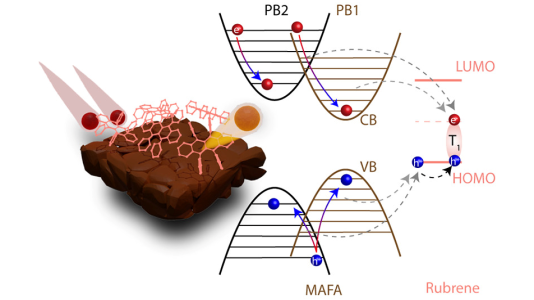
Scientific Achievement
The photophysical pathway has been revealed for triplet sensitization at the perovskite/rubrene interface. It involves rapid extraction on cooling of thermally excited charge carriers in the perovskite followed by triplet formation in the rubrene.
Significance and Impact
Current silicon-based solar cells cannot absorb wavelengths above 1100 nm, limiting their efficient use. The present results will help improve perovskite-based photon upconversion in these cells.
Research Details
DOI: https://doi.org/10.1021/acsenergylett.1c02732
Work was performed in part at the Center for Nanoscale Materials
Argonne National Laboratory seeks solutions to pressing national problems in science and technology. The nation’s first national laboratory, Argonne conducts leading-edge basic and applied scientific research in virtually every scientific discipline. Argonne researchers work closely with researchers from hundreds of companies, universities, and federal, state and municipal agencies to help them solve their specific problems, advance America’s scientific leadership and prepare the nation for a better future. With employees from more than 60 nations, Argonne is managed by UChicago Argonne, LLC for the U.S. Department of Energy’s Office of Science.
The U.S. Department of Energy’s Office of Science is the single largest supporter of basic research in the physical sciences in the United States and is working to address some of the most pressing challenges of our time. For more information, visit https://energy.gov/science.